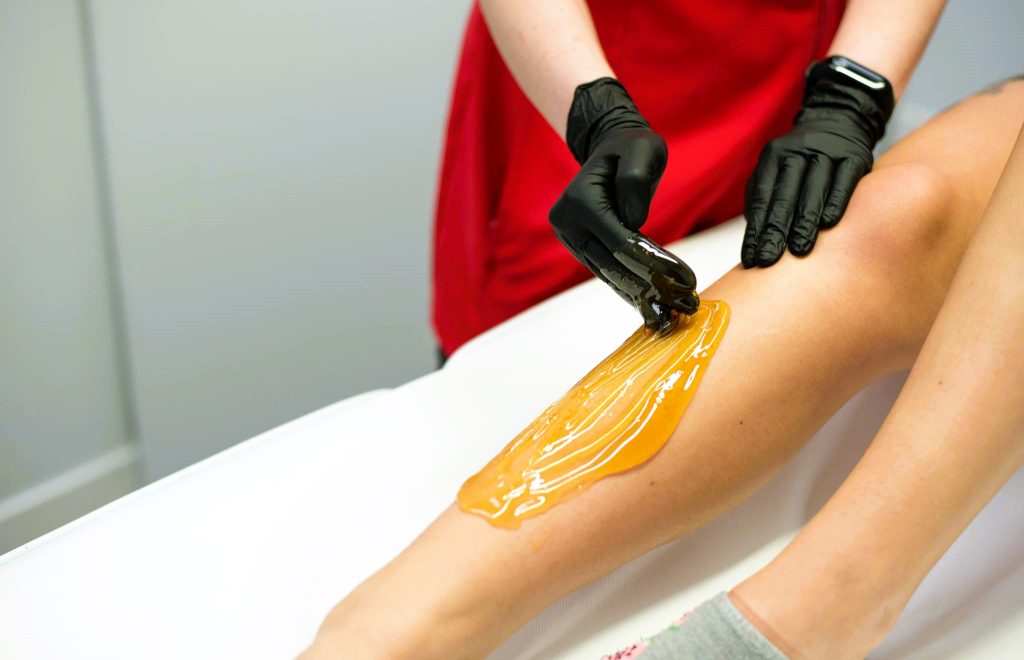Is it true that hair grows back more slowly after sugarpaste?
Blog BackTable of Contents:
- How does sugar paste work?
- Why does hair grow back slower after sugar paste?
- Is sugarpaste effective for everyone?
- For the results - it's worth it!

Sugar paste depilation, also known as sugaring, is becoming increasingly popular among those looking for effective and gentle hair removal methods. One of the most common questions asked by those considering this form of depilation is: Does hair grow back more slowly after a sugarpaste treatment? To answer this question, it is useful to look at how sugar paste works, its benefits and how it affects the hair growth cycle.
How does sugar paste work?
Sugar paste is a natural mixture of sugar, water and lemon juice, which has sticky properties and is ideal for hair removal. Sugaring, unlike other methods of depilation, works differently to traditional waxing. During application, the sugar paste is applied in the direction opposite to hair growth and then removed according to the natural direction of hair growth. This makes the process less painful and the hair is removed from the roots, which can affect hair regrowth. With this method, hair adhere to the sugar paste, which also reduces the risk of skin irritation.
Why does hair grow back slower after sugar paste?
One of the key reasons why hair grows back slower after a sugar paste treatment is because the paste removes the hair along with the roots. Unlike shaving, which only cuts the hair at the skin, sugaring pulls the hair out along with the roots, meaning the body takes longer to produce new hair. On average, after sugarpaste depilation, hair starts to grow back after 3-6 weeks, depending on the individual hair growth rate.
Regular use of sugar paste makes the regrowing hair thinner and weaker. This is because the constant removal of the hair along with the root weakens the hair follicles, which reduces their ability to produce strong and dark hair. Eventually, after a few treatments, you may notice that the hair regrowth is less visible and the regrowth process itself takes longer.
Every hair on the body goes through three growth phases: anagen (growth phase), catagen (transitional phase) and telogen (resting phase). Sugaring works best on hair in the anagen phase, when it is actively growing. Regular sugarpaste depilation has the effect of synchronising the hair growth cycle. This means that after a few treatments, you may notice that more hair grows back at the same rate, which means that the intervals between treatments can become longer.
Is sugarpaste effective for everyone?
Although sugar paste depilation has many benefits, it is worth remembering that the effectiveness of the treatment and the rate of hair regrowth can vary from person to person. The final result depends on a number of factors, such as:
- Hair type - people with thicker, darker hair may notice faster hair regrowth compared to those with fine, light hair.
- Frequency of treatments - regular use of sugar paste weakens the hair, which may contribute to longer periods between depilations.
- Hair growth cycles - everyone's body is different and hair growth rates can vary, so some people may need more frequent treatments, especially in the beginning.
For the results - it's worth it!
Yes, hair does indeed grow back slower after sugar paste depilation compared to shaving or other hair removal methods that do not remove hair from the root. Regular use of sugar paste leads to a weakening of the hair follicles, which makes the hair grow back thinner and weaker. What's more, longer intervals between treatments make sugaring a convenient option for those who want to enjoy smooth skin for longer.








